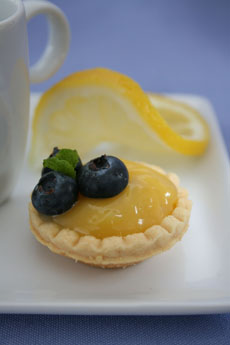RECIPE: No-Bake Cheesecake In A Jar

|
Want a cheesecake experience without turning on the oven? Here’s a recipe we adapted from Eat Wisconsin Cheese, that combines the old and the new. You can also substitute any flavor of curd for the lemon. Ingredients For 4-6 Servings 1. BEAT the lemon curd and honey in a mixing bowl with electric beaters, until smooth and creamy. 2. BEAT the cream into curd mixture until smooth. Add the mascarpone and beat just until thickened. Do not overbeat. 3. ASSEMBLE: Layer the cookie crumbs, lemon mascarpone cream and strawberries in individual parfait glasses. Repeat the layers until all ingredients are used. 4. REFRIGERATE for at least 2 hours, garnish and serve. |
|
|
THE HISTORY OF MASCARPONE Mascarpone, the Italian version of crème fraîche, but thicker and sweeter. It’s hard not to sit down with the entire container and a spoon. (Here’s the difference between mascarpone, crème fraîche, and sour cream). It used to be that all mascarpone was imported from Italy. American artisan cheesemakers make an even better product than what gets imported. Our favorite domestic mascarpone brands are Crave Brothers and Bel Gioioso, both in Wisconsin, and Vermont Creamery. Mascarpone is often refer to as Italian cream cheese; but please, don’t think of this rich, lush, soft fresh cheese as anything resembling a brick of foil-wrapped soft cheese filled with gum. Made from cream, not milk, mascarpone is the richest fresh cheese, ranging in butterfat content from 70% to 75%. It has a subtle natural sweetness, but can be used in savory recipes and toppings as well. As points of reference: A French double-crème Brie or Camembert has 60% to 75% butterfat. French triple-crème cheeses must have a butterfat content of 75% or more. Butter has a minimum of 80% fat in the U.S., 82% in France; going up to 86% for premium butters. In the U.S., mascarpone is most often associated with desserts, especially the classic tiramisu or as a topping for berries. But it can be used in savory recipes as well—pasta sauce, savory tarts/tartlets, stuffed chicken and tortas, among others. The name likely derives from “mascarpia,” the local dialect term for ricotta, because both ricotta and mascarpone are made by very similar processes. Mascarpone could have been a glorious accident in the preparation of ricotta. No cheese starter or rennet is used in its production; the moisture is drained from heavy cream using a small amount of citric acid and finely woven cloth. You can make it at home. Here’s a recipe. |
||
|
PRONOUNCE IT CORRECTLY!
Mascarpone may have the distinction of being the most misspelled and mispronounced cheese. Too many Americans call it “marscapone,” mar-sca-PON-neh, trespassing the consonants. The correct pronunciation is mas-car-POH-neh. The cheese is believed to have originated in the Lombardy region of Italy, in the late 1500s or early 1600s. Lombardy, in the northern part of the country (it includes the cities of Brescia, Cremona, Mantova, Milano and Sondrio), has a rich agricultural and dairy heritage. In the 1870s, New York State farmers farmers began to make a soft, unripened cheese modeled after the French Neufchâtel cheese. Within a few decades, a recipe for “cream cheese” appeared, made by mixing cream into the Neufchâtel curd. The new soft cheese was molded into small wood block forms. Because the city of Philadelphia had a reputation for fine food, a New York-based manufacturer, Phenix Cheese Company, named its product Philadelphia Brand Cream Cheese. It was the leading brand then as now. J.L. Kraft and Bros., established in 1909, acquired Phenix Cheese Company in 1930. The company is now called Kraft Foods Group. Fruit curd is a creamy spread made with sugar, eggs and butter, generally flavored with citrus juice and zest. Lemon curd is the classic variety, but lime curd and blood orange curd can be found, as can other fruit curds such as the strawberry. A citrus curd is refreshingly tart, as opposed to more sugary jams and preserves. Unlike lemon custard, for example, lemon curd contains more lemon juice and zest, which gives it a more piquant flavor. The butter creates a smoother and creamier texture than jam. Curd also can be used to fill tart shells, and as a garnish. Here’s the comparison of curd to the jelly, jam, marmalade, preserves, etc. |

|
|
|
|
||

